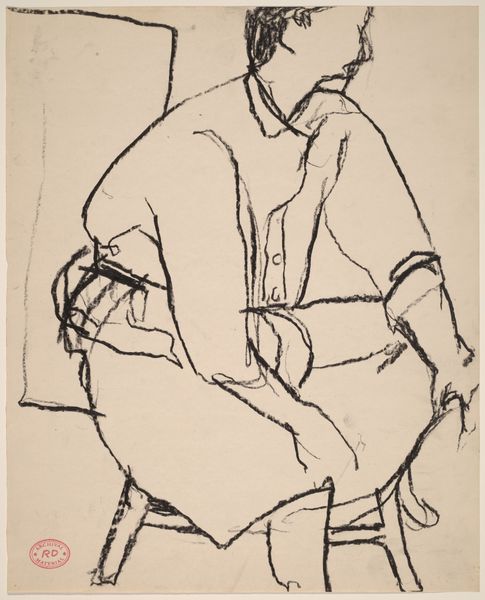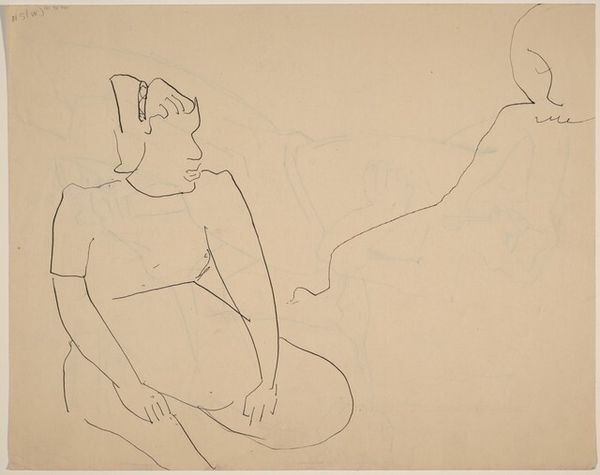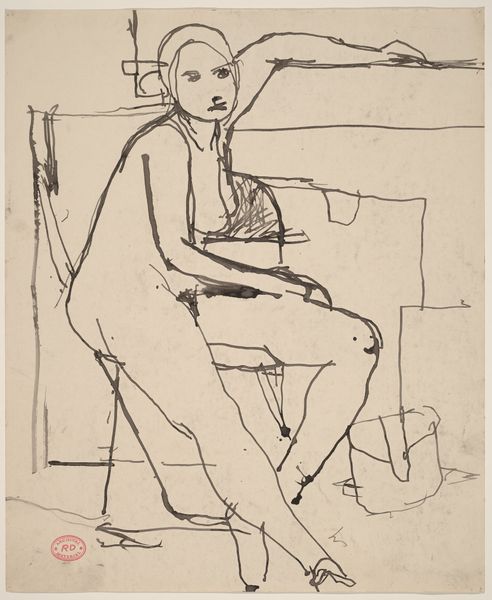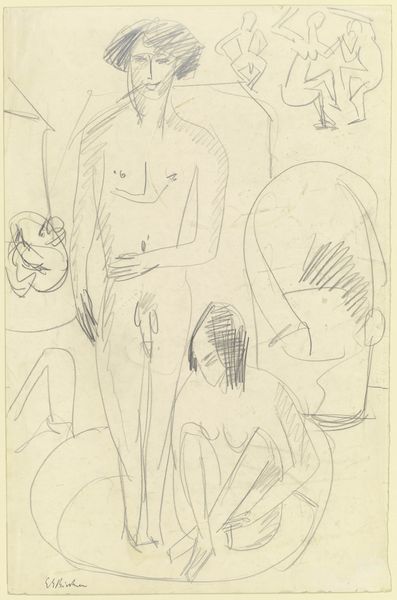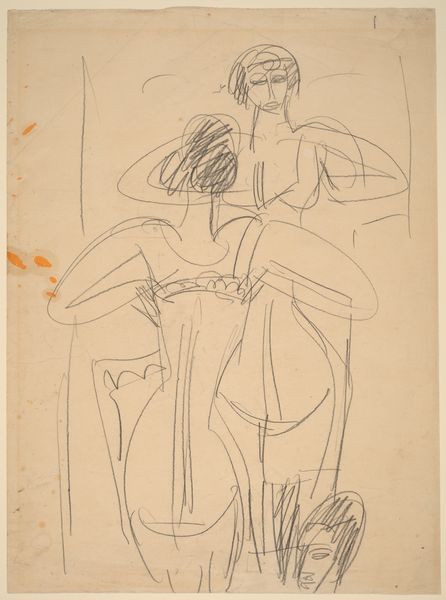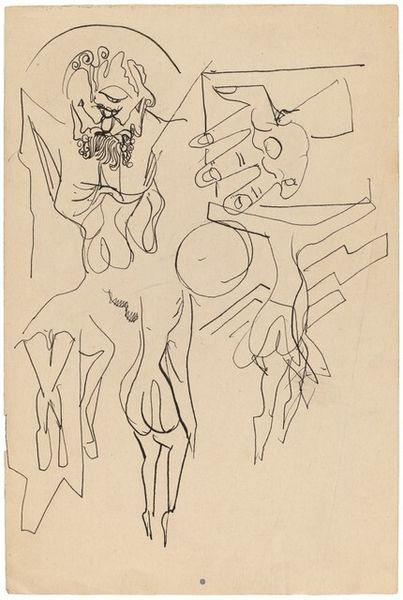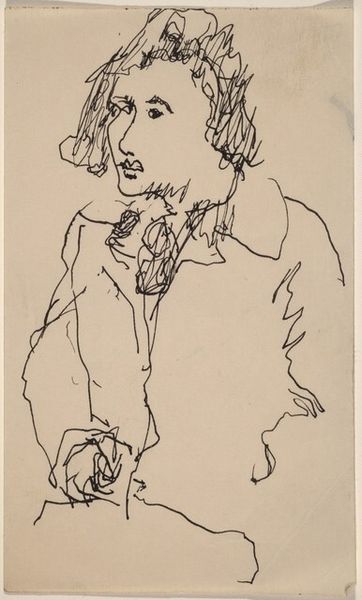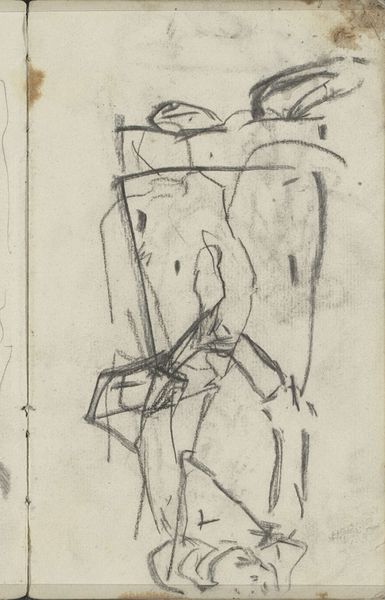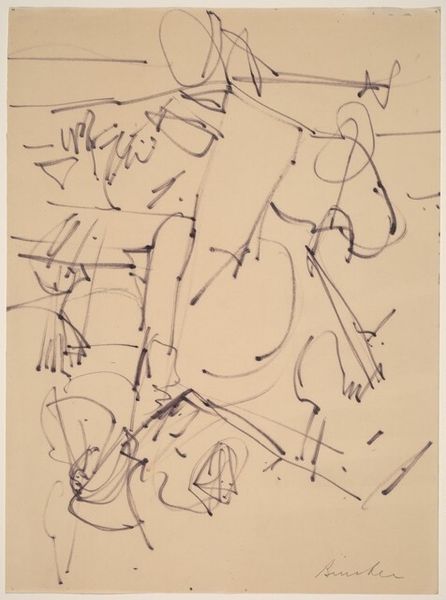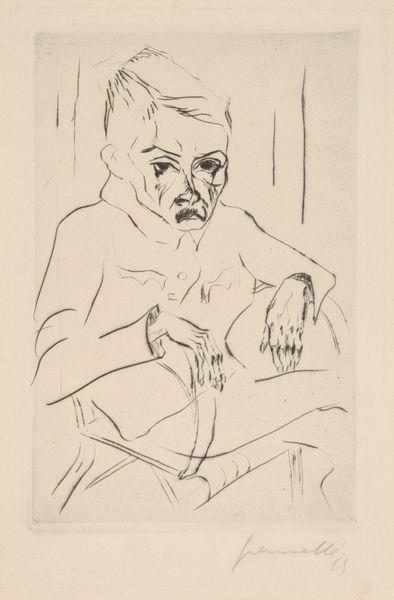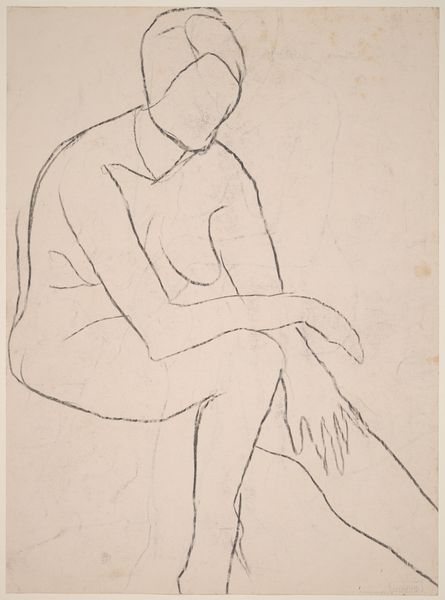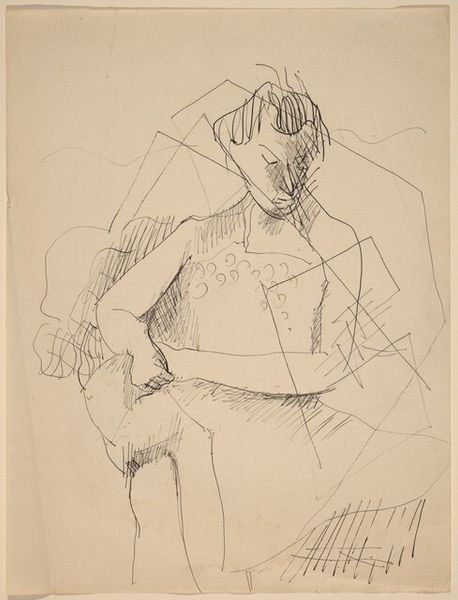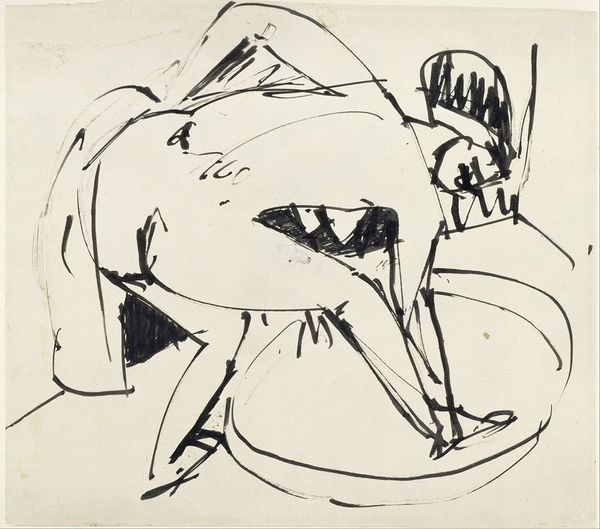
drawing
#
portrait
#
drawing
#
figuration
#
line
Copyright: National Gallery of Art: CC0 1.0
Editor: So, this is “Man Seated in a Rocker, Right Arm Raised” by Mark Rothko. It's a drawing, very linear and sparse. It strikes me as… incomplete, almost a sketch of a memory. What symbols jump out at you? Curator: The most arresting element is the gesture – that raised arm. It's a posture of… perhaps not triumph, but assertion. Given the historical context – Rothko, a Jewish émigré in America – does this defiant gesture represent resilience, or the echo of lost cultural traditions asserting themselves in a new world? Notice, too, how the rocking chair, a symbol of domesticity and comfort, is rendered so abstractly. Does that abstraction imply a questioning of the very idea of ‘home’ or belonging? Editor: That's fascinating, I hadn't thought of the rocker like that! So the familiar can also represent displacement? Curator: Precisely! And consider the lines themselves: so economical, yet they capture a palpable sense of the figure's presence. What does such economy tell us? What are we invited to project onto this absence of detail? Is Rothko highlighting the universality of the human experience? Editor: It makes you consider the weight of cultural background on simple things. Curator: Absolutely. The lack of explicit detail pushes the viewer to fill in the blanks, inviting them to project their own cultural memories and anxieties onto the image. Do we see strength or vulnerability in that raised arm? Editor: I think it depends on who's looking. Curator: Indeed. And that is the enduring power of symbols: they resonate differently across time and across cultures. Editor: Thank you. I definitely see this piece differently now! Curator: My pleasure! Visual art serves as an important bridge to our collective and individual past, linking symbols with identity, and perhaps with the human condition.
Comments
No comments
Be the first to comment and join the conversation on the ultimate creative platform.
